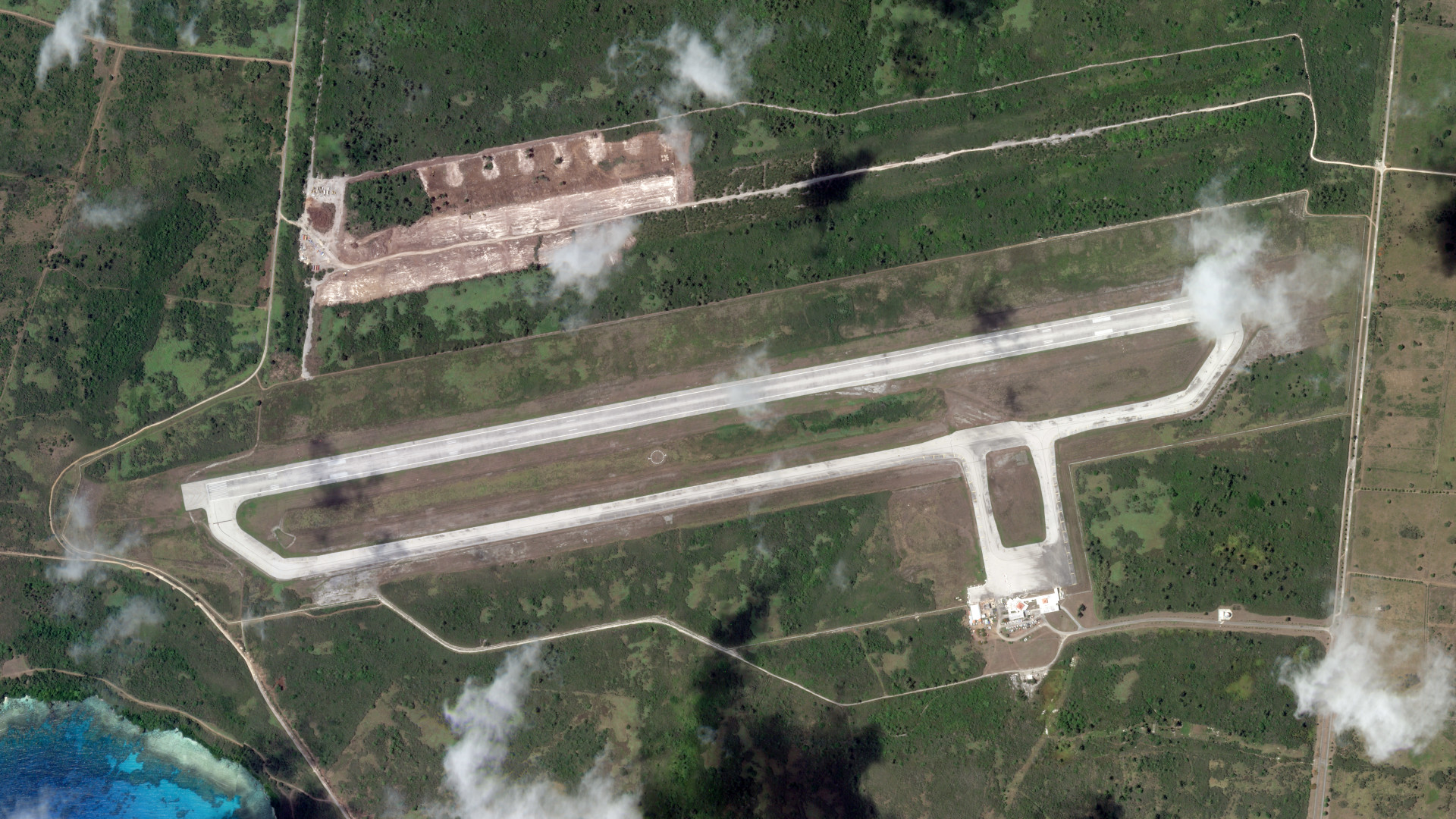Satellite imagery shows major construction at Tinian International Airport that we can say with near certainty is linked directly to plans to expand the facility’s ability to act as a divert airfield for the U.S. military in a crisis. More than a decade in the making, the project is intended to provide a vital alternative operating location to the U.S. Air Force’s massive Andersen Air Force Base on the island of Guam, just to the southwest of Tinian, should that base be put out of action for any reason. Concerns about Andersen’s vulnerability, specifically to a Chinese missile barrage, during the opening stages of potential future conflict in the region have been growing in recent years, something highlighted in The War Zone‘s previous reporting on this proposed airfield expansion effort.
A satellite image obtained by The War Zone of Tinian, taken on June 6, shows a section of land cleared just to the northwest of Tinian International Airport’s main runway. A pre-existing access road runs east-west through roughly the center of the apparent work area. A review of historical satellite imagery available through Planet Labs shows that work at this site began in early May.

The new construction seen in the June 6 image aligns with known plans to add a new taxiway and aircraft parking apron, among other things, on the north side of Tinian International Airport as part of the Tinian Divert Airfield project. A ground-breaking ceremony was held on the island in February of this year to mark the formal start of this work, which will cost approximately $161.8 million and is excepted to be completed by October 2025.
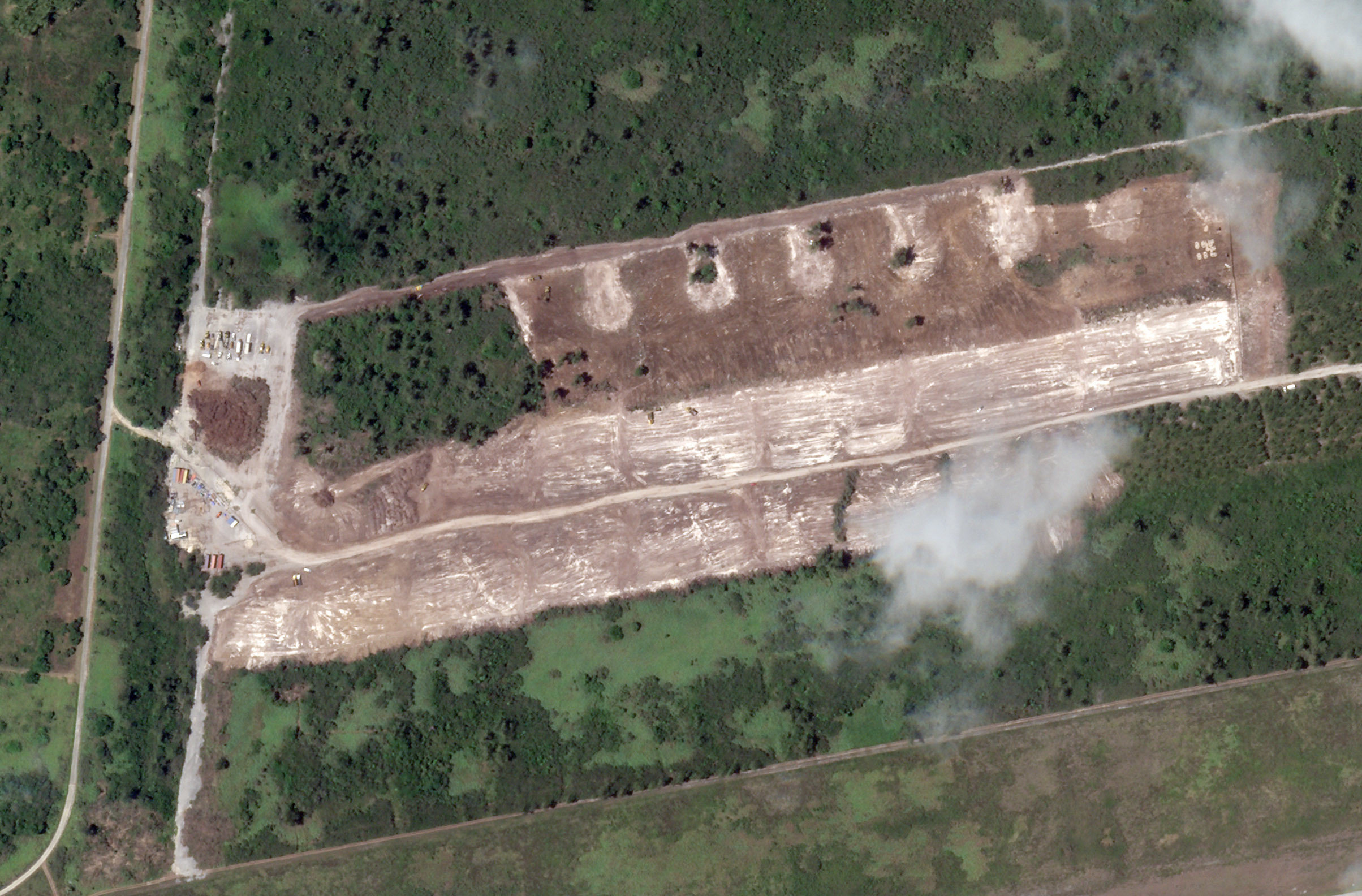

The divert airfield project traces its roots back to at least the early 2010s, when environmental impact assessments first began regarding proposed construction options on both Tinian and the neighboring island of Saipan. Tianan and Saipan are both U.S. territories that are part of the larger Commonwealth of the Northern Mariana Islands (CNMI). Guam is also a U.S. territory, but is not part of the CNMI.
In December 2016, the U.S. Air Force made a formal decision to pursue the Tinian option. The Department of Defense and authorities in from the CNMI signed a 40-year lease deal enabling the construction effort to proceed in 2019. The U.S. Navy’s Naval Facilities Engineering Systems Command Marianas (NAVFAC Marianas) is currently managing the divert airfield project, but plans to turn over the new facilities to the Air Force when they are ready.
The complete divert airfield effort is also set to include the construction of new fuel storage facilities at Tinian’s main port on the southern end of the island and a pipeline linking them to the airport, as well as various associated roadway improvements.
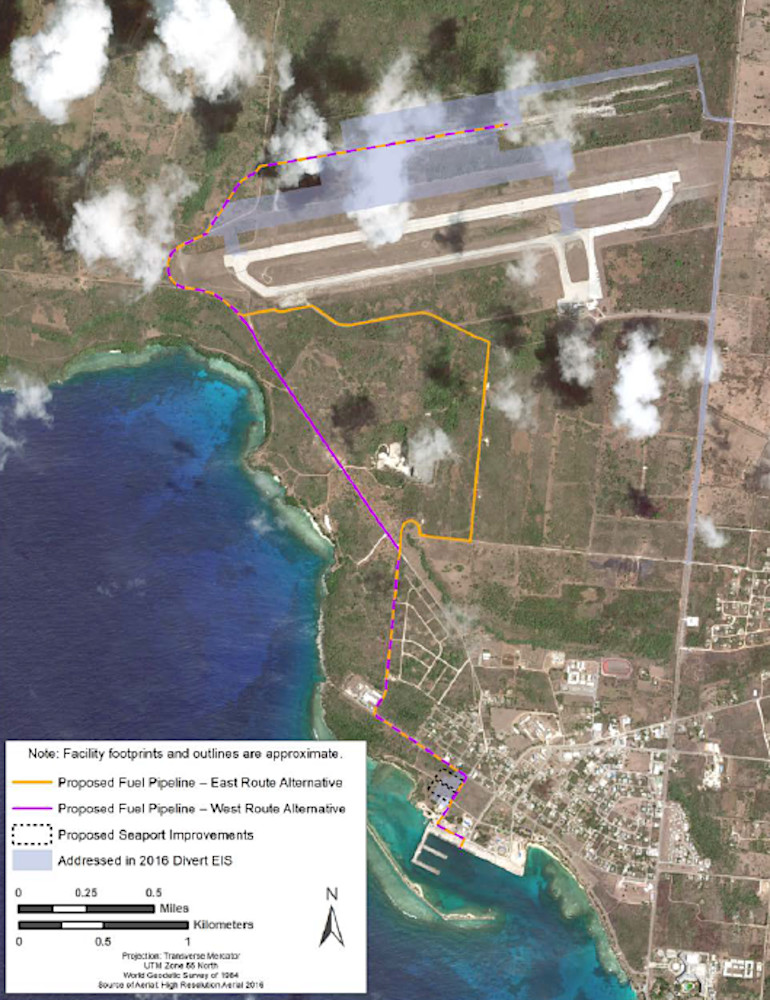
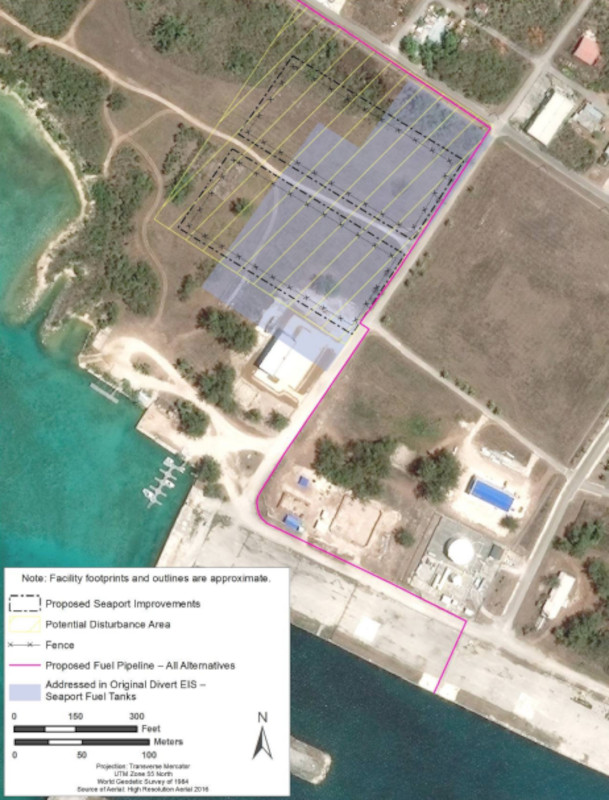
It’s also unclear whether any of the construction work that the U.S. military conducted on Tinian to help prepare the island for Exercise Valiant Shield 22, which included roadway improvements, was in any way tied to the work on establishing the divert airfield. Valiant Shield is a major joint-service field training exercise held biennially in various parts of the western Pacific. This year’s iteration began on June 6 and is slated to wrap up on June 17.
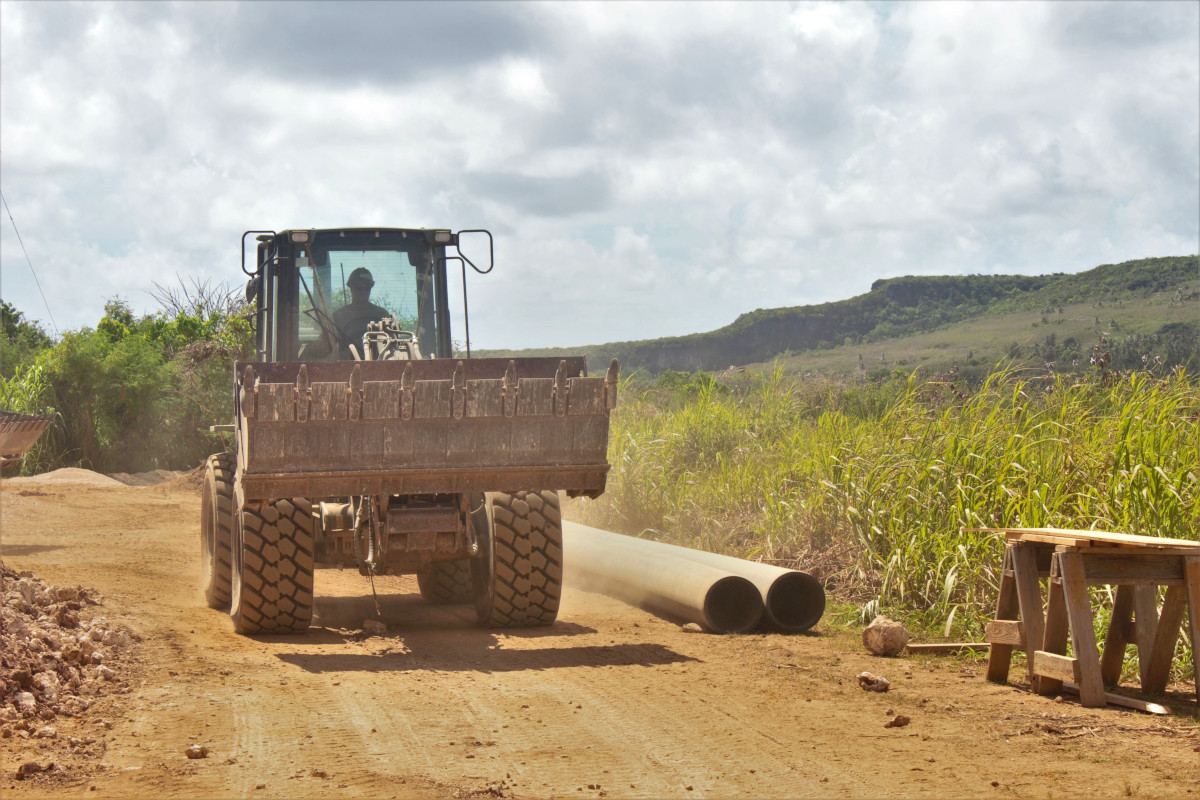
Valiant Shield 22, which includes various training activities on and around Tinian, as well as Guam and Saipan, only underscores the strategic significance of this particular region as a whole and highlights the reasons for starting the divert airfield project in the first place.
The U.S. military does already make use of the airports on Tinian and Saipan for exercises and trains to utilize them during various contingency scenarios. The U.S. Air Force and the Marine Corps have both practiced deploying contingents of combat jets to Tinian International Airport in the past. Mobile arresting gear systems have been employed in some instances to provide an added margin of safety for fast jets operating there and the Marines employed them there for short field operations.
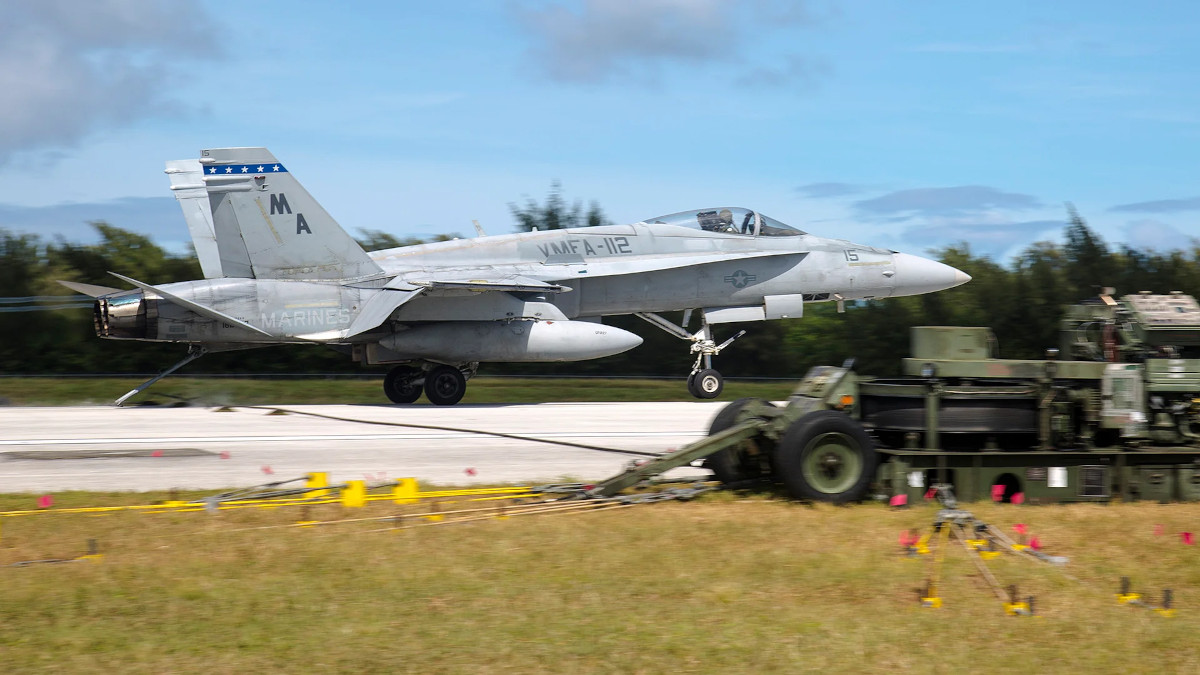
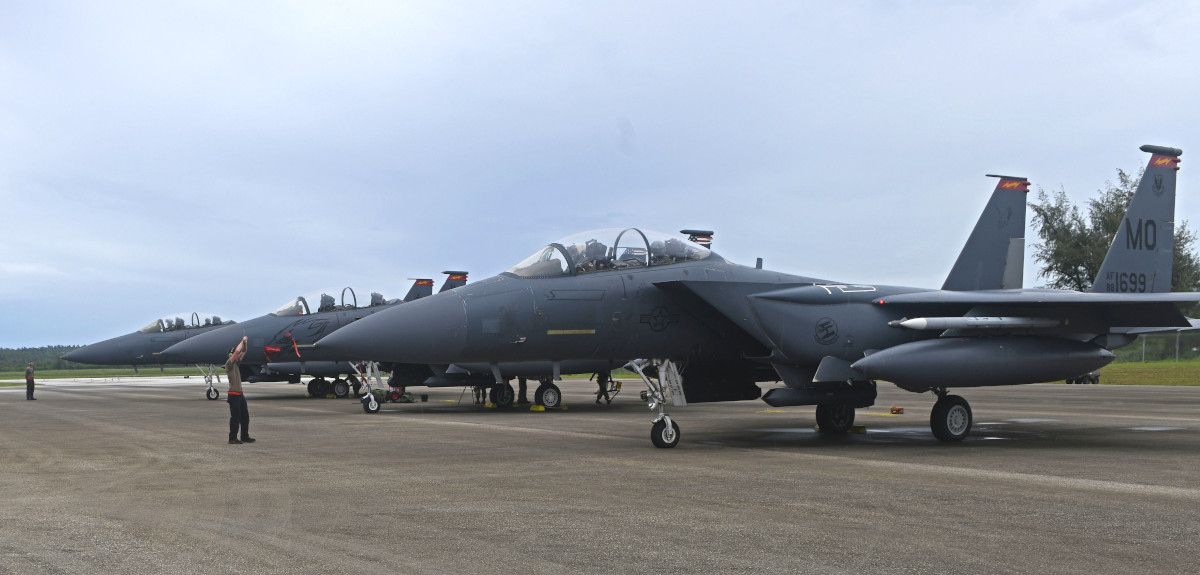
There is another, separate airfield on Tinian, known as North Field, which was originally built to support B-29 bomber operations during World War II, and some limited improvement work has been done there in recent years, as well. However, it remains primarily suitable for training related to conducting transport and air assault aviation operations from remote or austere locations, including during exercises like Valiant Shield.
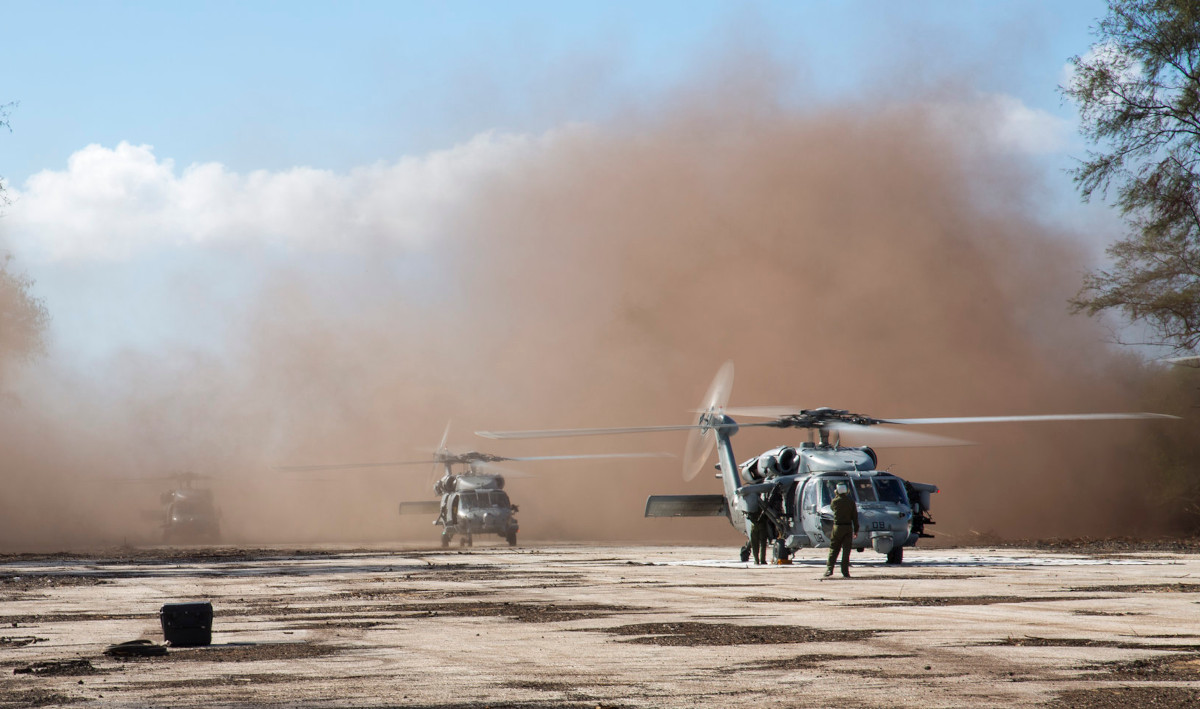
However, at present, Tinian, as well as Saipan, has nowhere near the airfield infrastructure available at Andersen Air Force Base on Guam. At the same time, concerns about the vulnerability of Andersen, as well as other established U.S. military facilities on Guam, especially to missile strikes in the opening phases of a potential high-end conflict in the Pacific against China, have only grown in recent years.
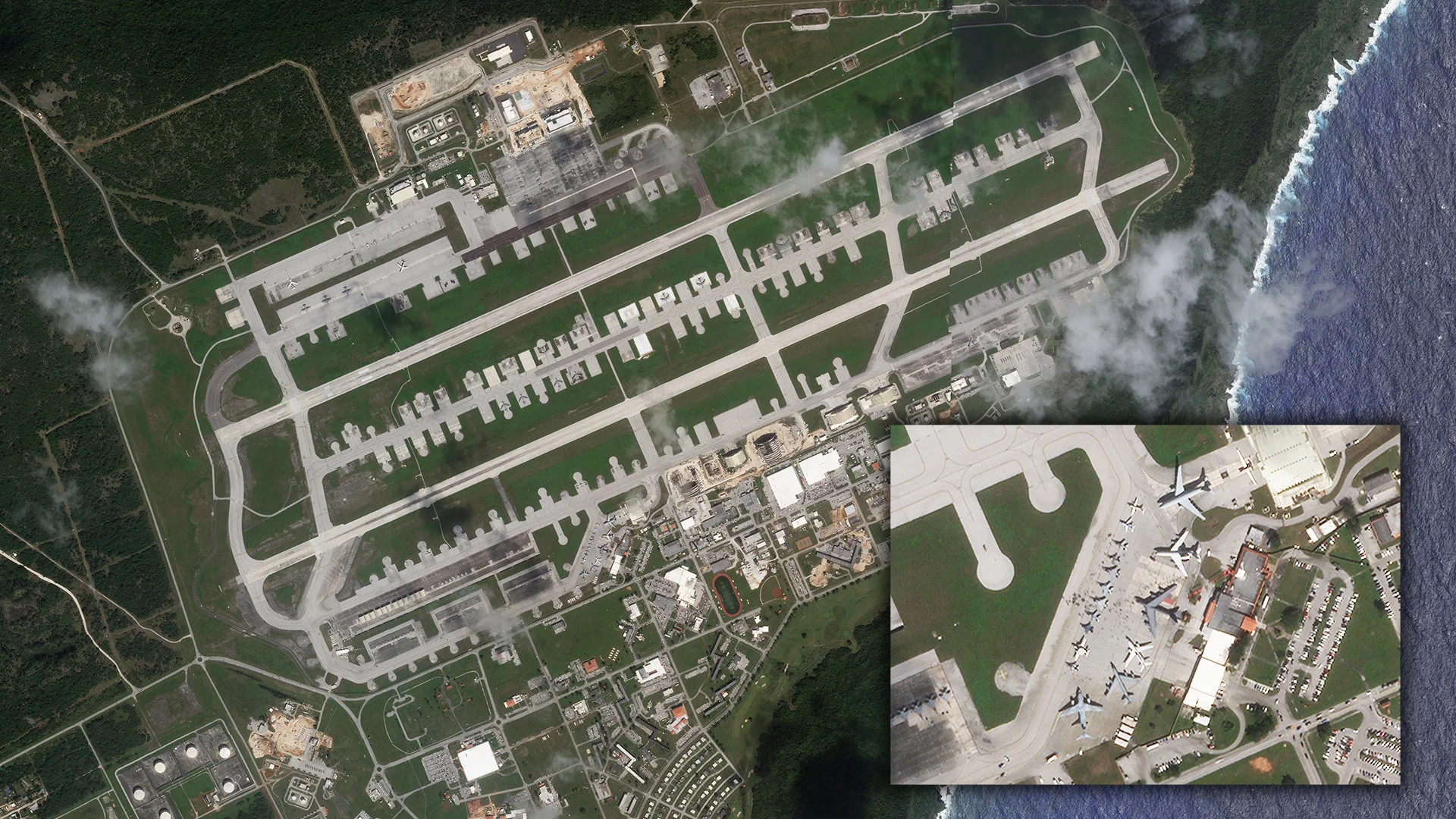
Even after the divert airfield project is complete, Tinian’s airfield facilities will pale in comparison to those on Guam. Still, they will give the Air Force, as well as other branches of the U.S. military, a more viable and immediate alternative to Andersen, especially when it comes to supporting larger aircraft, like aerial refueling tankers and cargo planes, should flight operations come to a halt on Guam as a result of enemy action or for any other reason.
“The divert initiative in CNMI will create the only divert airfield in the Western Pacific and provide the U.S. Air Force the capability to conduct either temporary or sustained refueling operations from an additional location in the region,” now-retired Air Force Gen. Mark Welsh, then the service’s Chief of Staff, had said in 2016 when the decision was made to establish the divert field on Tinian, rather than Saipan. “It will also give us another location to use when supporting contingency or natural disaster responses in the region.”
At that time, the expectation was that the expanded facilities at Tinian International Aiport would be able to support up to 12 aerial refueling tankers and host the additional personnel necessary to support those operations. It is important to note that, at least based on information from initial environmental impact assessments, the exact scope of the planned construction work on the island has changed, at least to some degree, over the years.
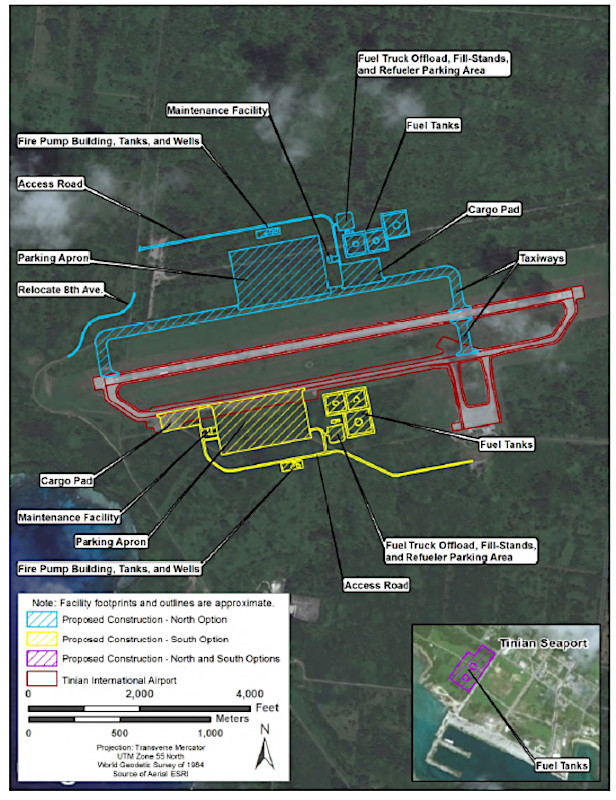
“We don’t have any plans to station airmen or assets at the Tinian divert location,” Air Force Gen. Kenneth Wilsbach, head of Pacific Air Forces (PACAF), had said in an interview with the Marianas Business Journal newspaper in 2020. “We do want to build it out such that we can use it for divert — primarily for tanker aircraft and mobility aircraft.”
The “airfield, roadway, port, and pipeline improvements will provide vital strategic, operational, and exercise capabilities for the U.S. forces,” Air Force Brig. Gen. Jeremy Sloane, commander of the 36th Wing, headquarters at Andersen on Guam, said during the groundbreaking ceremony earlier this year, pointing to a potentially broader vision for how the facilities might be utilized.
From the beginning of the project, U.S. military officials have also highlighted how the expanded divert airfield on Tinian will offer a valuable additional operating location for various peacetime activities, including responses to natural disasters in the region.
The construction work on Tinian is part of a larger effort to expand facilities and general basing options in the Pacific region that includes improvements on Guam itself. This has included work on the island’s Northwest Field, which is now capable of supporting operations involving fighter jets, including F-35 Joint Strike Fighters, and other aircraft.
Additional U.S. military base expansion work has been taking place on Wake Island, another U.S. territory in the Pacific some 1,500 miles to the northwest of Guam. You can read more about this island’s significance and the work being done there specifically in this past War Zone piece.
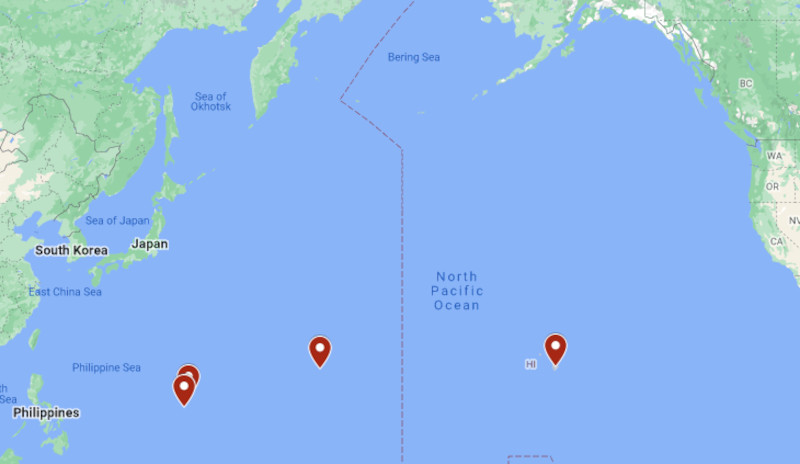
The U.S. military is also working with allies and partners across the greater Pacific region to provide additional base facilities that could be used in various contingency scenarios. Last year, the Pentagon submitted a $27 billion plan covering various efforts to challenge China in the Pacific, which included $4.67 billion for “Power Projection, Dispersal, and Training Facilities” in the Federated States of Micronesia, Palau, and the Marshall Islands, among other locations. Those three archipelago nations are all sovereign states, but are heavily linked to the United States through an international agreement called the Compacts of Free Association (COFA).
When it comes to the new divert airfield on Tinian, it is worth noting that it is well within the range of the same threats as Andersen, though it would then force an opponent to devote additional resources to the overall task of neutralizing airfields in the region. This is something the Air Force, as well as other branches of the U.S. military, appears to be well aware of as evidenced by the service’s current focus on distributed concepts of operations from remote and austere locations, including highways. Improved base defenses, as well as simply attempting to deceive opponents as the locations of deployment aviation elements, are also increasingly topics of discussion.
“You want to confuse the enemy about where you actually are,” Secretary of the Air Force Frank Kendall told Aviation Week‘s Brian Everstine in an interview in March. “So some decoys in other locations will be helpful to do that.”
Still, more basing options are definitely better than fewer. The U.S. military’s work to expand airfield facilities on Tinian is just one part of a broader effort to ensure American combat aircraft have places to operate from in a future large-scale conflict, or any other major contingency, in the Pacific.
Contact the author: joe@thedrive.com
